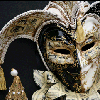Archetypes - What Are They?
The Word
The word 'Archetype' comes from the Greek arkhetupon ‘something moulded first as a model’, from arkhe- ‘primitive’ + tupos ‘a model’. It is the 'original pattern' or essence from which all other similar patterns, types and templates are based upon. Personality Archetypes represent primordial human characteristics. They can evoke deep feelings, be it inspiration, distaste or profound indifference. These reactions are all interesting.
Jungian Archetypes
Carl Gustav Jung, the Swiss psychiatrist, employed the concept of archetypes as universally collective portraits of personality types. He utilised these extensively in his work. The archetypes are timeless and depicted as myths and symbols. As humans, we usually have several archetypes at play at any given time although we tend to have one dominant character as our central theme. This represents our most automatic sense of self and governs our go-to behaviour.
Becoming familiar with our relationships with archetypes gives us greater clarity to the shape of our personality and it's strengths and weaknesses. This self-knowledge provides a frame for defining that ever-illusive concept of who we are. Without this fundamental grasp, attempts at change run the risk of being artificial and may well not serve our best interests. Wholesome change comes from honing our own original self to express itself untethered by false masks. This makes for more informed decisions and, therefore, a more resonant lifestyle.
The Fingerprints of You
Colour Palettes of Character
Understanding our own unique blend of archetypal strengths and weaknesses is like discovering a paintbox of character traits for more accordant interaction with the self and the world at large. Archetypal tendencies often present themselves in dreams to illuminate our psychological state, what strengths we might call upon to help us or what less helpful approaches we are taking. These pieces of information are gems.
In archetypal work, we learn what our comfortable archetypes are as well as the ones we have negative reactions to and those who have little or no seeming impact. As this understanding develops, we become better equipped to witness our responses to events and make more authentic choices. This is personal empowerment. Getting to know your unique array of archetypal influence is like embracing your unique palette of character colour that suit you. Matches and contrasts are made with wisdom.
Fingerprints of Your Character
Although there are many more archetypes, Jung believes that they all gather within this essential classification of 12 types. They all have their strengths, weaknesses, motifs and blend that is as unique as your fingerprints. These prints may be clear and unfettered or, like with most of us, they may have some smudgy bits that might have served us well in the past but have now outrun their usefulness. The clear water of awareness provides a more insightful and smooth experience of being yourself.
Introducing the 12 Essential Archetypes
Very Brief Sketches
Please find below some very simplified sketches of the 12 essential Archetypes as defined by Jung. While I have ascribed some meaning to each one, this is a very personal matter and moves with circumstance. Archetypal meaning is seldom static, but rather evolves, abates, blends and breathes with time. Each will have its own meaning for the viewer despite what it is called.
I have created my own set of many dozens of pictorial Archetype images that are available to work with in sessions.
Ego Types
The Innocent
 Core Desire: Happiness, Safety
Core Desire: Happiness, Safety
Goal: To reach Nirvana
Strength: Acceptance, legitimacy, virtue, honesty
Shadow: Naivity, blinkered
Also known as: Pollyanna, Squeaky Clean
Soul Types
The Explorer
 Core Desire: To be free
Core Desire: To be free
Goal: Newness, Discovery
Strength: Active, Energetic
Shadow: Inability to commit
Also known as: The Seeker, The Perfectionist
Self Types
The Magician
 Core Desire: Metamorphosis
Core Desire: Metamorphosis
Goal: To master the elements
Strength: Transformation, alchemy
Shadow: Manipulation, delusion, cultist
Also known as: Wizard, Enchanter/tress, Shaman
The Regular Person
 Core Desire: Belonging
Core Desire: Belonging
Goal: To be of the tribe
Strength: Dependability, Steadiness, Upholding
Shadow: Loss of self-truth
Also known as: Average Joe, Square-Shoulders
The Lover
 Core Desire: Intimacy
Core Desire: Intimacy
Goal: To be empassioned
Strength: Enthusiasm, Pleasure, Relationships
Shadow: Dependency, Seduction
Also known as: Romeo, Juliet, Paramour, Beau
The Sage
 Core Desire: Wisdom
Core Desire: Wisdom
Goal: To be enlightened
Strength: Understanding, Discrimination
Shadow: Confusion, Impractical, Pompous
Also known as: The Wise One, Mentor, Teacher
The Hero/Heroine
 Core Desire: Self--worth
Core Desire: Self--worth
Goal: To be admired by others
Strength: Courage, tenacity, helpfulness
Shadow: Fear of weakness
Also known as: Champion, Idol, Saviour
The Rebel
 Core Desire: Evolution
Core Desire: Evolution
Goal: To be the change
Strength: Making way for newness, clearing paths
Shadow: Destruction, Harm, Crime
Also known as: Revolutionary, Misfit, Mover/Shaker
The Ruler
 Core Desire: Control
Core Desire: Control
Goal: To be in power
Strength: Responsibility, Leadership
Shadow: Dominance, Rigidity, Fascism
Also known as: Emperor, Chief, Ringleader
The Caregiver
 Core Desire: To heal
Core Desire: To heal
Goal: To alleviate suffering
Strength: Generosity, Patience, Kindness
Shadow: Codependence, Martyrdom, Subservience
Also known as: Angel of Mercy, Saint, Altruist
The Creator
 Core Desire: Expression
Core Desire: Expression
Goal: Bring imagination into form
Strength: Creativity, aesthetics
Shadow: Illusion, delusion, fanatical
Also known as: Artist, Designer, Diva
The Jester

Goal: To be carefree
Strength: Humour, joy, whimsy
Shadow: Flightiness, superficiality, lack of dignity
Also known as: Comedian, Trickster, Farceur
 Therapy with Me
Therapy with Me Meeting Place
Meeting Place Contact
Contact Frequently-Asked Questions
Frequently-Asked Questions Contact
Contact
